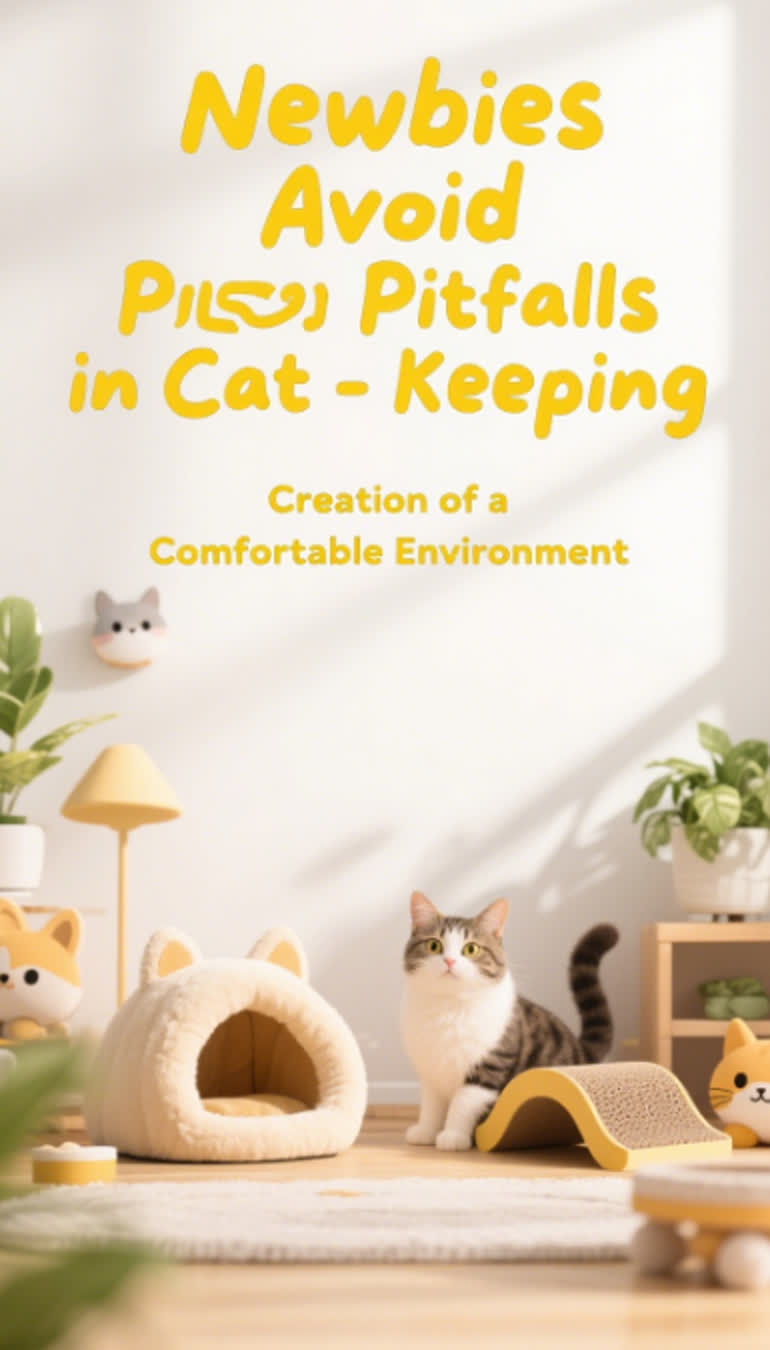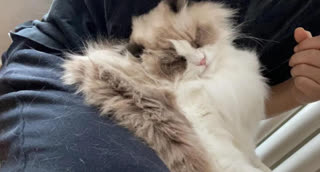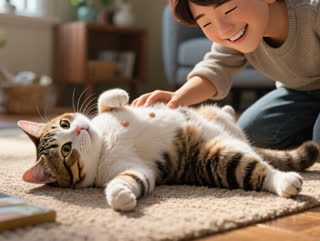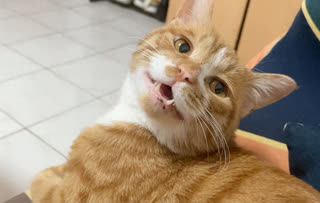Securing Windows and Balconies: Cats are notorious for their love of high places, and a curious cat could easily fall from an open window or balcony. Install window guards or screens that are cat-safe to prevent accidents.
Putting Away Hazardous Items: Cats are known to get into things, so it's essential to keep potentially dangerous items out of their reach. This includes chemicals such as cleaning products, pesticides, and antifreeze, as well as small objects that could be swallowed, like rubber bands, coins, and jewelry.
Hiding Electrical Cords: Cats may be tempted to chew on electrical cords, which can be extremely dangerous. Use cord protectors or hide cords behind furniture to keep your cat safe.
Providing a Safe Space: Create a small, quiet area for your cat to retreat to when they need some alone time. This could be a spare room, a corner of a room with a cozy bed and some toys, or even a large cardboard box.
Food and Water Bowls: Choose bowls that are made of stainless steel or ceramic, as these materials are easy to clean and less likely to cause allergies. Avoid plastic bowls, as they can harbor bacteria and may cause chin acne in some cats.
High-Quality Cat Food: Cats are obligate carnivores, which means they require a diet that is rich in animal protein. Look for a high-quality cat food that is appropriate for your cat's age, breed, and health needs. You can choose between dry food, wet food, or a combination of both. Some cats prefer wet food because it has a higher moisture content, which can be beneficial for their urinary health.
Litter Box and Litter: The litter box should be large enough for your cat to move around in comfortably. There are many different types of litter available, including clay, clumping, crystal, and biodegradable options. Experiment to find the type of litter that your cat prefers. Place the litter box in a quiet, private area away from the cat's food and water bowls.
Cat Bed: Provide your cat with a cozy place to sleep. There are many different types of cat beds available, from simple mats to elaborate cat condos. You can also offer your cat a soft blanket or a pillow to curl up on.
Toys: Cats love to play, and providing them with a variety of toys can help keep them entertained and mentally stimulated. Some popular cat toys include balls, feathers, catnip toys, and interactive toys like wand toys and puzzle toys.
Scratching Post or Pad: Cats have a natural instinct to scratch, which helps them keep their claws healthy and mark their territory. Provide your cat with a scratching post or pad to redirect their scratching behavior away from your furniture. You can choose from a variety of materials, such as sisal, cardboard, or carpet.
Follow the Feeding Guidelines: Read the feeding guidelines on the cat food packaging carefully and adjust the amount of food you give your cat based on their age, weight, activity level, and overall health. Overfeeding can lead to obesity, which can cause a variety of health problems in cats, including diabetes, joint problems, and heart disease.
Provide Fresh Water at All Times: Cats need access to fresh, clean water at all times. Change your cat's water daily and wash their water bowl regularly to prevent the growth of bacteria. You can also consider using a water fountain to encourage your cat to drink more water, as some cats prefer running water.
Avoid Feeding Table Scraps: While it may be tempting to share your food with your cat, table scraps can be high in fat, salt, and sugar, which can be harmful to your cat's health. Stick to feeding your cat a balanced diet of high-quality cat food.
Consider a Variety of Foods: Some cats can be picky eaters, so it may be helpful to offer them a variety of different types of cat food to keep them interested. You can try different flavors, textures, and brands of food to see what your cat likes best. However, it's important to introduce new foods gradually to avoid upsetting your cat's stomach.
Scoop the Litter Box Daily: Remove any solid waste and clumps from the litter box daily using a litter scoop. This will help keep the litter box clean and odor-free.
Change the Litter Regularly: Depending on the type of litter you use and the number of cats you have, you may need to change the litter completely every few weeks or once a month. When changing the litter, thoroughly clean the litter box with soap and water and rinse it well before adding fresh litter.
Keep the Litter Box in a Quiet, Private Area: Cats prefer to use the litter box in a quiet, private area away from their food and water bowls. Avoid placing the litter box in a high-traffic area or near a noisy appliance, such as a washing machine or a dryer.
Consider Using Multiple Litter Boxes: If you have multiple cats, it's a good idea to provide one litter box per cat, plus an extra one. This will help prevent competition and ensure that each cat has access to a clean litter box.
Brush Your Cat's Coat Regularly: The frequency of brushing depends on your cat's coat length and type. Long-haired cats may need to be brushed daily to prevent matting, while short-haired cats can be brushed once or twice a week. Use a brush that is appropriate for your cat's coat, such as a slicker brush for long-haired cats and a bristle brush for short-haired cats.
Trim Your Cat's Nails: Cats' nails grow continuously, and if they are not trimmed regularly, they can become too long and cause problems, such as getting caught in furniture or scratching people. Trim your cat's nails every few weeks using a pair of cat nail clippers. Be careful not to cut the quick, which is the pink part of the nail that contains blood vessels and nerves. If you're not sure how to trim your cat's nails, you can ask your veterinarian or a professional groomer for advice.
Clean Your Cat's Ears and Eyes: Check your cat's ears and eyes regularly for any signs of dirt, discharge, or infection. Use a soft, damp cloth to gently clean the outer part of your cat's ears and eyes. If you notice any redness, swelling, or excessive discharge, contact your veterinarian.
Bathe Your Cat as Needed: While cats are generally clean animals and groom themselves regularly, they may need to be bathed occasionally, especially if they get into something dirty or have a skin condition. Use a cat-specific shampoo and lukewarm water to bathe your cat. Be gentle and avoid getting water in your cat's ears or eyes. Some cats may not like being bathed, so it's important to introduce them to the process slowly and make it a positive experience.
Play with Your Cat: Cats love to play, and playing with your cat is a great way to bond with them and provide them with exercise. You can use a variety of toys, such as balls, feathers, catnip toys, and interactive toys like wand toys and puzzle toys. Set aside some time each day to play with your cat and make it a fun and interactive experience.
Provide Scratching Posts and Pads: As mentioned earlier, cats have a natural instinct to scratch, and providing them with a scratching post or pad can help keep them entertained and prevent them from scratching your furniture. You can also place scratching posts and pads in different areas of the house to encourage your cat to move around and explore.
Create a Cat-Friendly Environment: Cats love to explore and climb, so creating a cat-friendly environment can help keep them mentally stimulated. You can install cat shelves, perches, and cat trees in your home to give your cat a place to climb and explore. You can also place some cat toys and treats in different areas of the house to encourage your cat to explore and play.
Consider Interactive Toys and Games: There are many interactive toys and games available for cats that can provide them with mental stimulation and exercise. These include puzzle feeders, which require your cat to figure out how to get the food out, and interactive laser pointers, which can keep your cat running and jumping.
Ask for Recommendations: Ask your friends, family, neighbors, or other cat owners for recommendations on veterinarians in your area. You can also check online reviews and ratings to get an idea of the quality of care provided by different veterinarians.
Visit the Clinic: Once you have a list of potential veterinarians, visit their clinics to get a feel for the environment and the staff. Look for a clean, well-organized clinic with friendly and knowledgeable staff.
Consider the Services Offered: Make sure the veterinarian you choose offers a full range of services, including preventive care, vaccinations, dental care, and emergency care. You may also want to consider whether the clinic offers additional services, such as grooming or boarding.
Meet the Veterinarian: Schedule a consultation with the veterinarian to meet them and discuss your cat's needs. This will give you an opportunity to ask questions and get a sense of the veterinarian's communication style and approach to cat care.
Rabies Vaccine: Rabies is a serious and potentially fatal disease that can be transmitted to humans and other animals. All cats in the United States are required by law to be vaccinated against rabies.
Feline Panleukopenia (Feline Distemper) Vaccine: Feline panleukopenia is a highly contagious viral disease that can cause severe vomiting, diarrhea, and dehydration in cats. Vaccination is the best way to protect your cat from this disease.
Feline Calicivirus and Feline Herpesvirus Vaccines: These two viruses are common causes of respiratory infections in cats. Vaccination can help reduce the severity and duration of symptoms if your cat does contract one of these viruses.
Feline Leukemia Virus (FeLV) Vaccine: FeLV is a virus that can weaken a cat's immune system and increase their risk of developing other diseases, such as cancer. Vaccination is recommended for cats that are at high risk of exposure to FeLV, such as outdoor cats or cats that live in multi-cat households.
Changes in Appetite or Water Consumption: A decrease in appetite or an increase in water consumption can be a sign of a variety of health problems, such as dental issues, kidney disease, or diabetes.
Lethargy or Lack of Energy: If your cat seems unusually tired or lethargic, it could be a sign that they are not feeling well.
Vomiting or Diarrhea: Vomiting and diarrhea are common symptoms of many different health problems in cats. If your cat is vomiting or having diarrhea, it's important to contact your veterinarian to determine the cause and get appropriate treatment.
Changes in Litter Box Habits: If your cat starts using the litter box less frequently or having accidents outside of the litter box, it could be a sign of a urinary tract infection, bladder stones, or other health problems.
Coughing or Sneezing: Coughing and sneezing can be a sign of a respiratory infection or other health problems. If your cat is coughing or sneezing, it's important to contact your veterinarian to determine the cause and get appropriate treatment.
Changes in Behavior: Any significant changes in your cat's behavior, such as becoming more aggressive, withdrawn, or vocal, could be a sign of a health problem. If you notice any changes in your cat's behavior, it's important to contact your veterinarian to discuss your concerns.
Stay Calm: It's important to stay calm and composed in an emergency situation. Panicking can make the situation worse and may cause your cat to become more stressed.
Contact Your Veterinarian: Call your veterinarian immediately and explain the situation. They will be able to provide you with advice on what to do next and may ask you to bring your cat in for an emergency examination.
Know the Location of the Nearest Emergency Veterinary Clinic: In case your veterinarian is not available, it's important to know the location of the nearest emergency veterinary clinic. Keep their phone number and address handy in case of an emergency.










